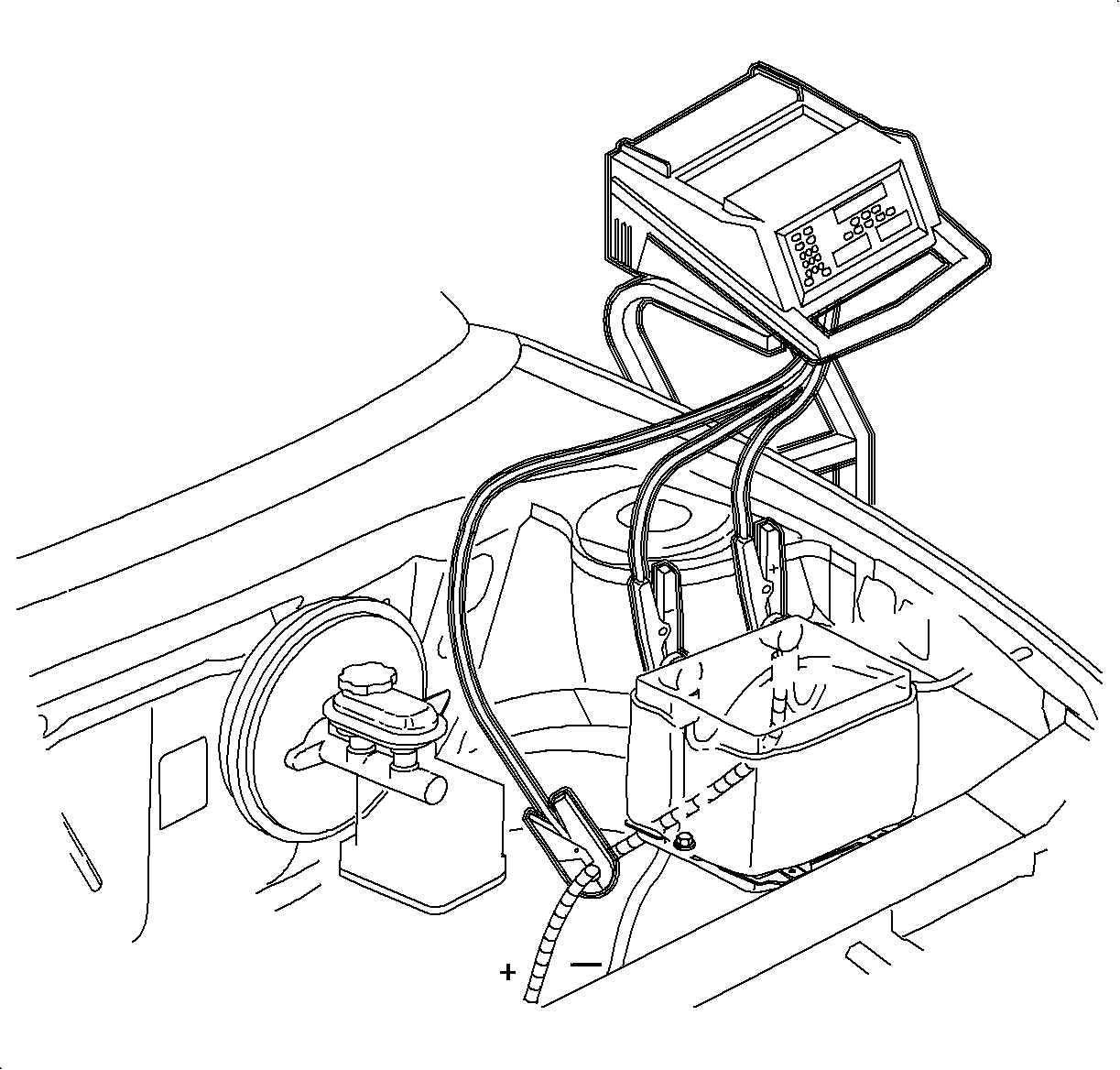Tools Required
SA9154A-A Starting and charging System Tester
- Turn On Starting and Charging System Tester SA9154Z-A. Connect large red tester cable to battery positive (+). Place gray inductive current pick-up around battery positive (+) cable. Make sure that arrow on gray inductive current pick-up is pointing toward starter motor solenoid.
- Press the STARTER TEST button on the tester. The tester will display: "INPUT # CYLS". Input number of cylinders.
- Disable ignition system by disconnecting electrical connection at ignition module.
- Position tester so display con be seen from the driver's seat. When display says CRANK ENGINE, turn ignition to START position. Tester will continue to display CRANK ENGINE for 15 seconds.
- Press the STARTER TEST button on the system tester. The tester will display:
- Display on tester will give the following information:

Important: Place gray inductive current pick-up around battery positive cable between battery positive terminal and starter motor solenoid connections. The battery positive cable is covered by a protective wire conduit. This conduit does not need to be removed before testing.
"INPUT # CYLS." Input the number of cylinders.

Room Temperature: 5°- 27°C (40°- 80°F) | 80 - 120 amps |
Hot Engine: Coolant above 50°C (120°F) | 70 - 110 amps |
Cold Engine: 5°C (40°F) | 90 - 130 amps |
Cold Engine: -20°C (-4°F) | 230 - 280 amps |
Important: As the ambient temperature decreases the amperage required to crank the engine increases.
Cranking Voltage: This displays average battery voltage during cranking. If the voltage is below 9.5 volts, perform BATTERY TEST to make sure battery is charged and in good. Good cranking voltage and a slow starter cranking speed can be caused by loose or corroded cables.Good Starter/Bad Starter: If the display reads BAD STARTER, replace the starter motor only after determining that there is no engine mechanical problems or flywheel binding problems.
Notice: The starter should not be engaged for more than 15 seconds at a time. If the vehicle does not start after 15 seconds, turn the ignition key to the Off position for 20 seconds before attempting to restart the vehicle.
